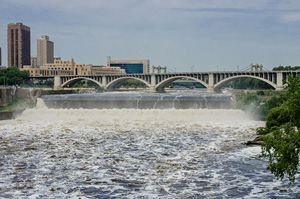Climate Adaptation and Source Water Impacts

EPA works with state tribal and local governments to provide clean and safe drinking water, even as the climate changes.
Climate change threatens the quality of source water through increased runoff of pollutants and sediment, decreased water availability from drought and saltwater intrusion, as well as adversely affecting overall efforts to maintain water quality.
Heavy downpours are projected to increase due to climate change. Heavy rainfall can increase pollutant runoff and sedimentation in source waters such as rivers, lakes and streams. Such runoff and sedimentation can complicate treatment at drinking water utilities and result in increased costs. Increased erosion and sedimentation can diminish water quality, block stormwater management systems and decrease storage capacity.
Climate change is projected to intensify drought across much of the country. During a drought, water utilities can face a loss of water supply and increased demand from customers. Drought can reduce short term water sources, such as reservoir or lake levels, or affect longer-term storage, such as mountain snowpack. Drought can also increase drinking water treatment costs by concentrating contaminates in source waters and thereby diminishing source water quality.
Drought and sea level rise, when coupled with changing water demand, can increase saltwater intrusion into source waters. Saltwater intrusion, whether in groundwater or surface water, may reduce the amount of available source water or degrade the quality of available source water.
Climate change can affect the ability to maintain source water quality as well as the water quality conditions of surrounding rivers, lakes, and streams. An increase in stormwater runoff can degrade water quality and worsen existing pollution problems. Higher air temperatures, and the corresponding increase in water temperatures, can also promote increased growth of algae and microbes in some waterbodies. An increase in Harmful Algal Blooms (HABs) can threaten availability of source water and increase the need for drinking water treatment.
